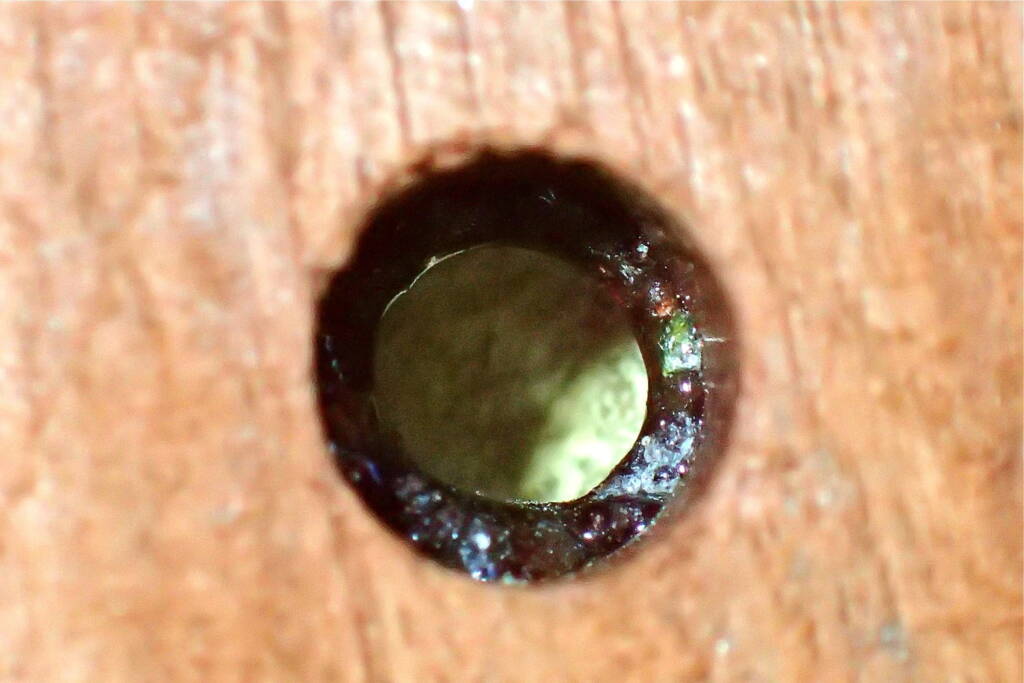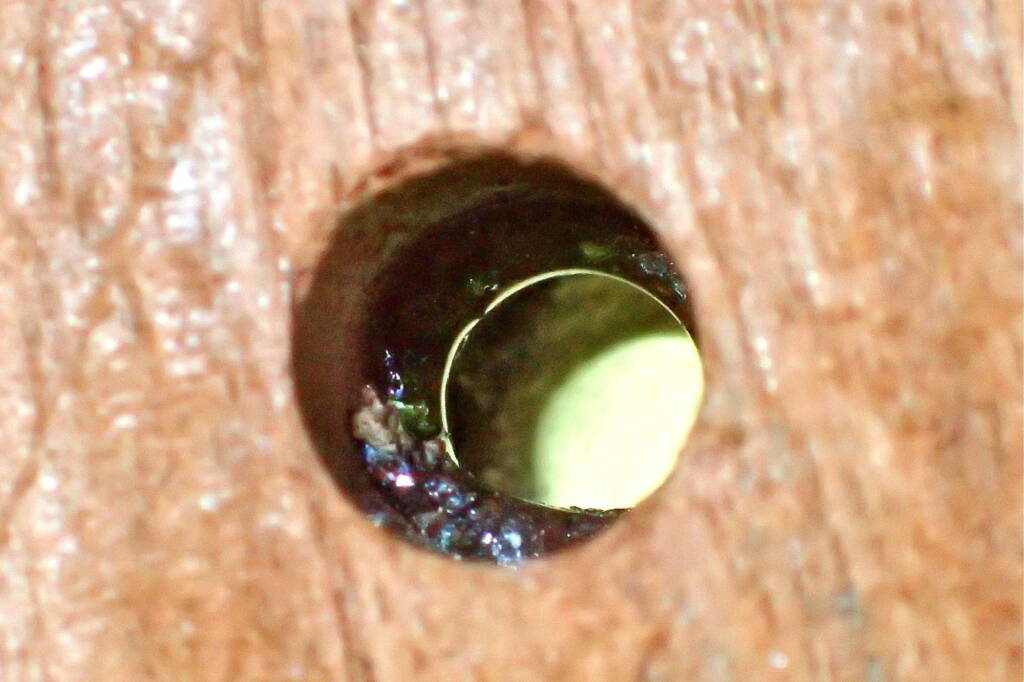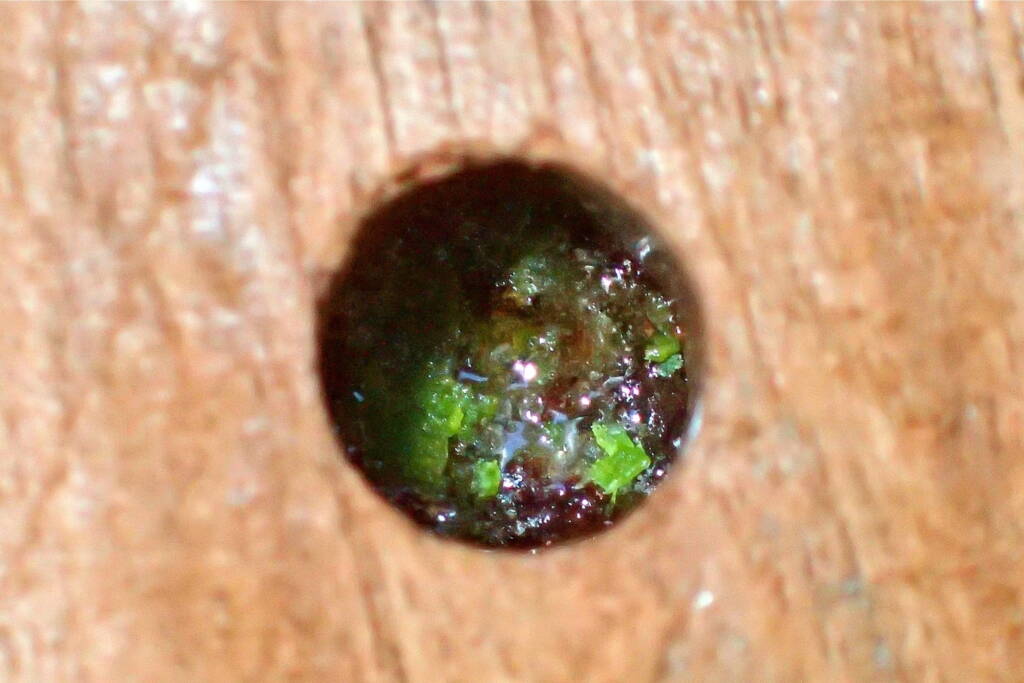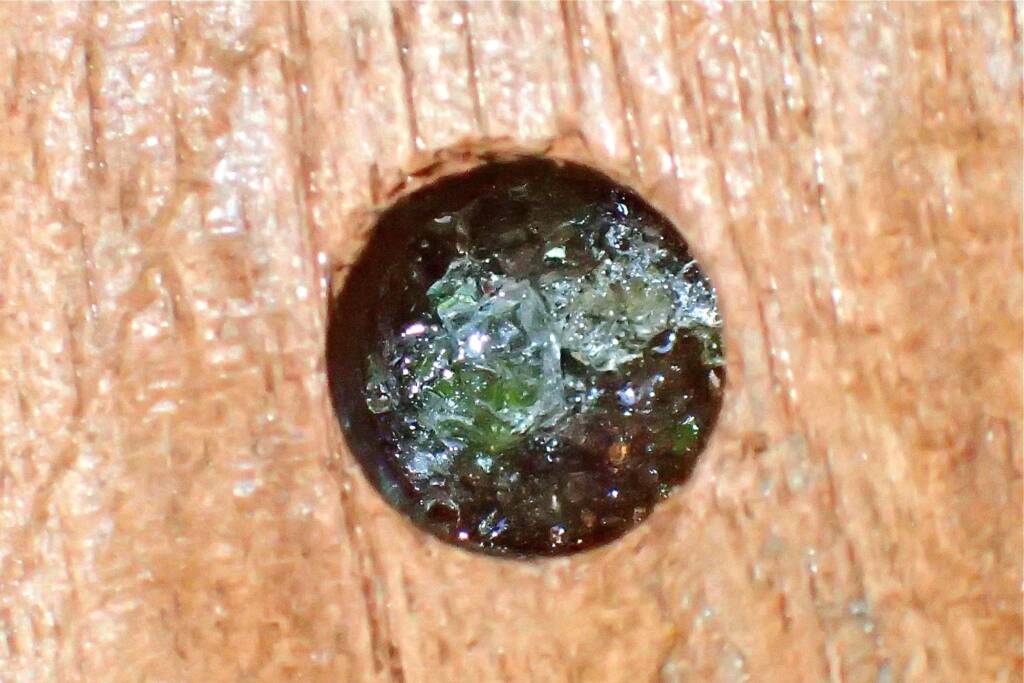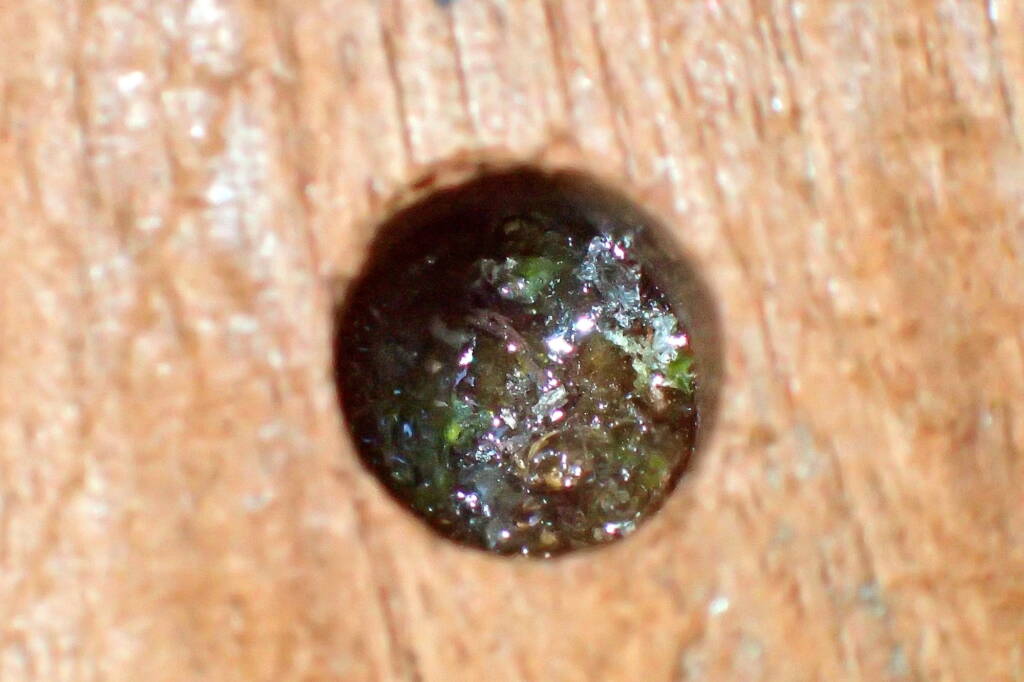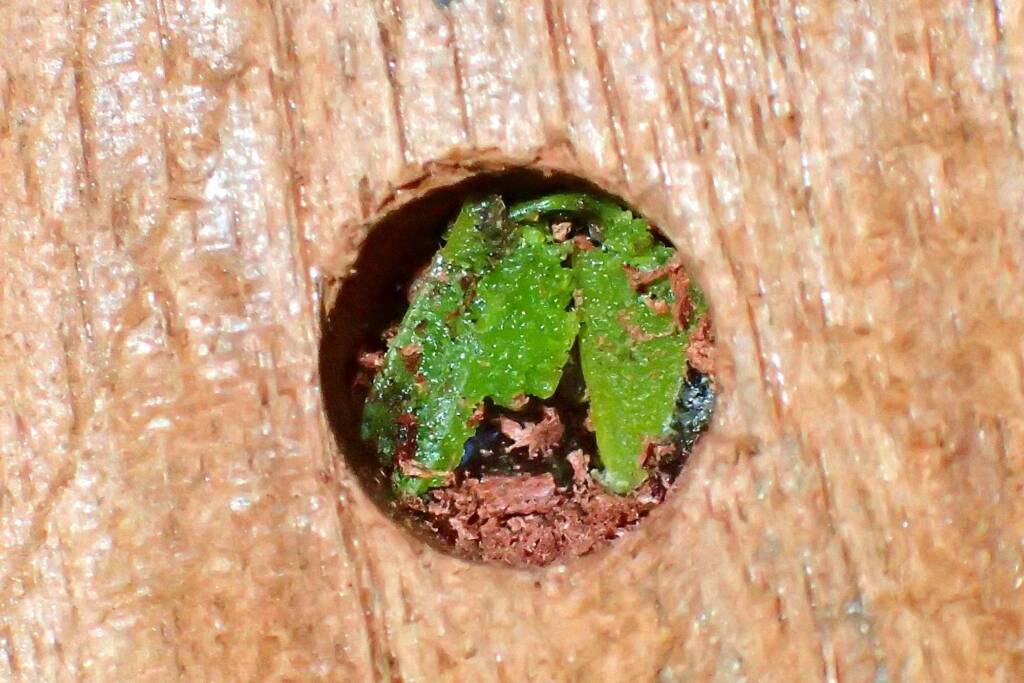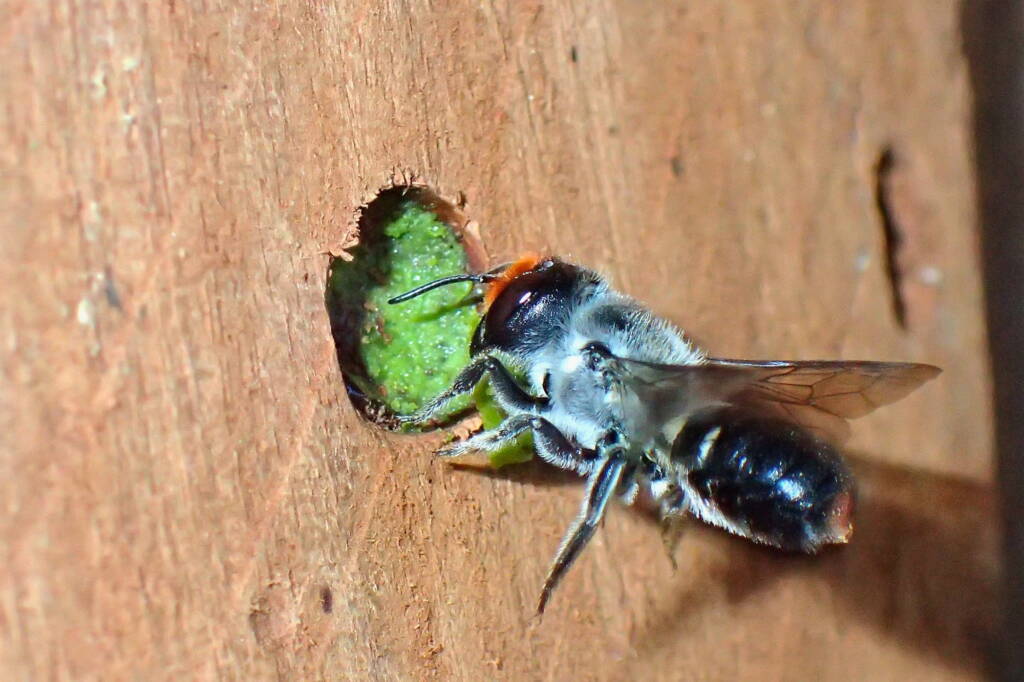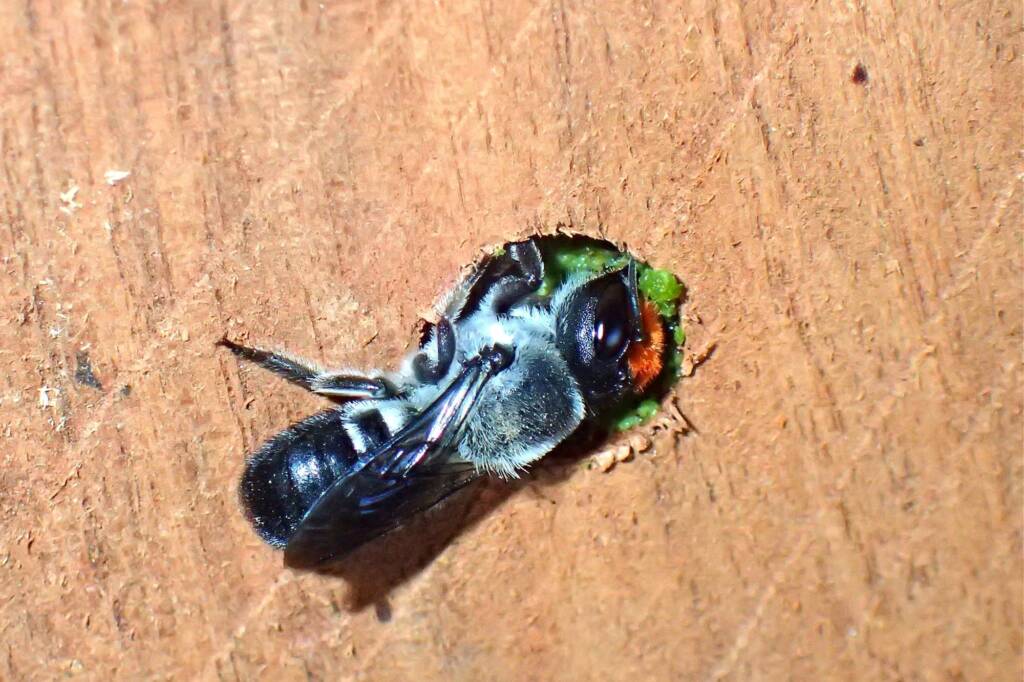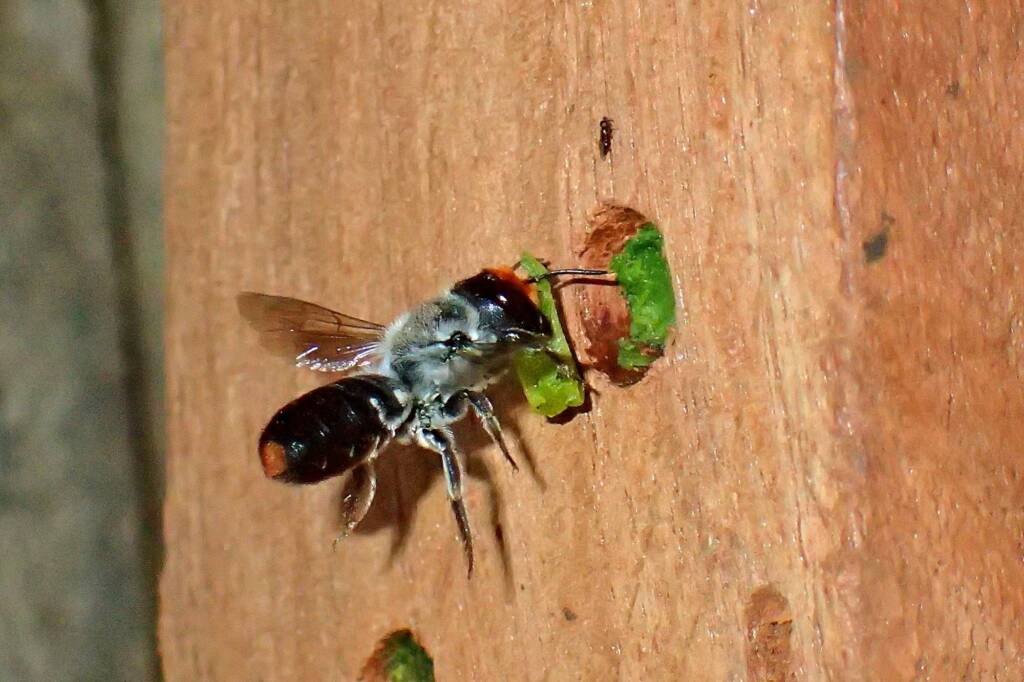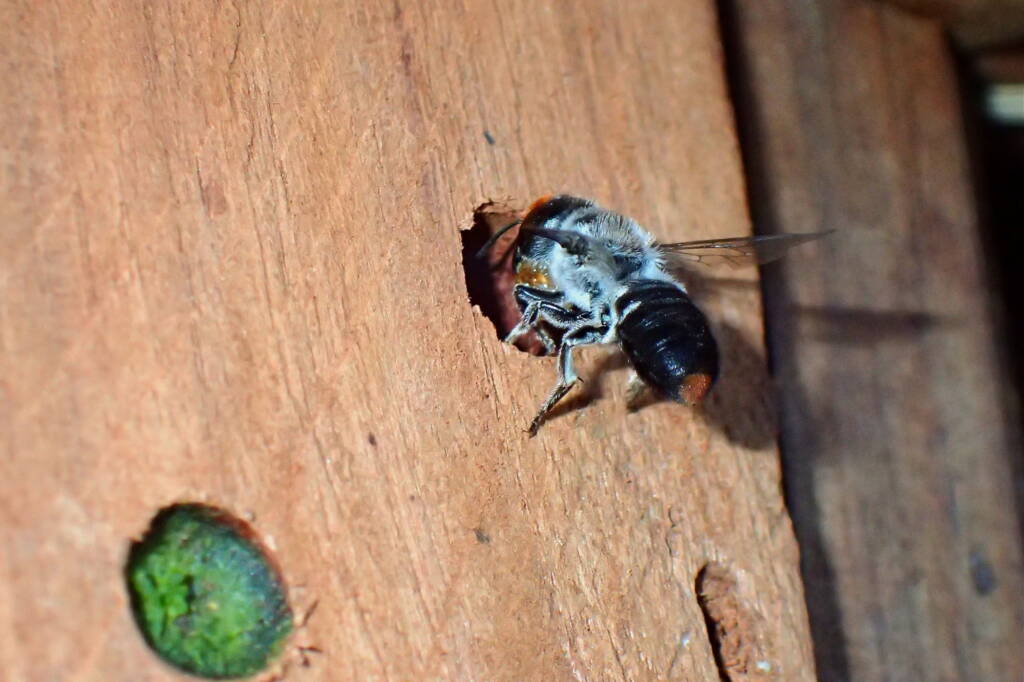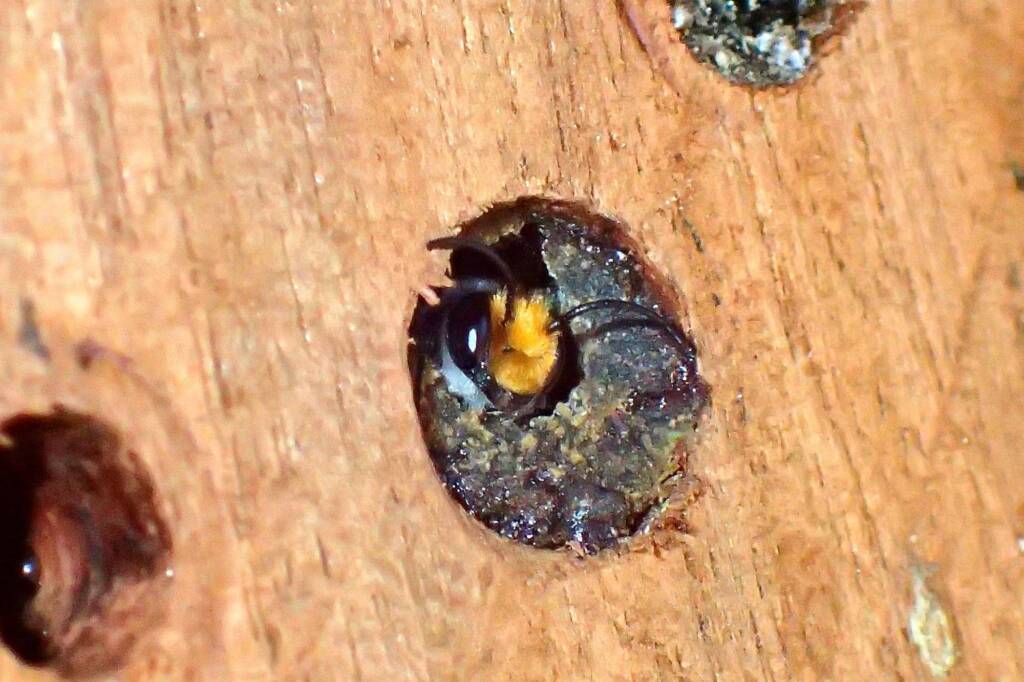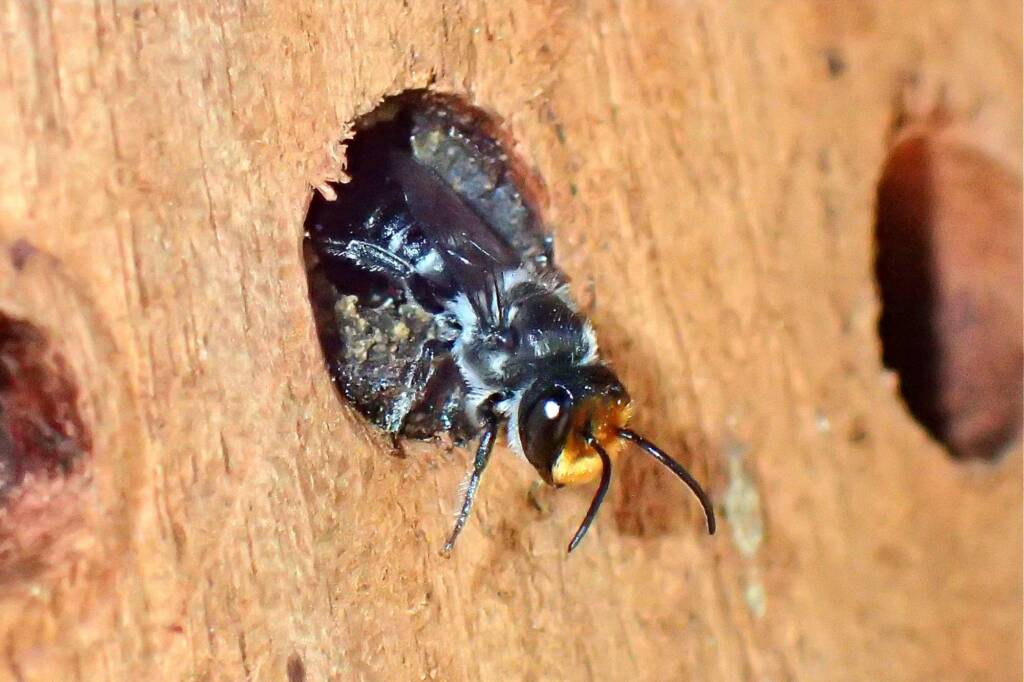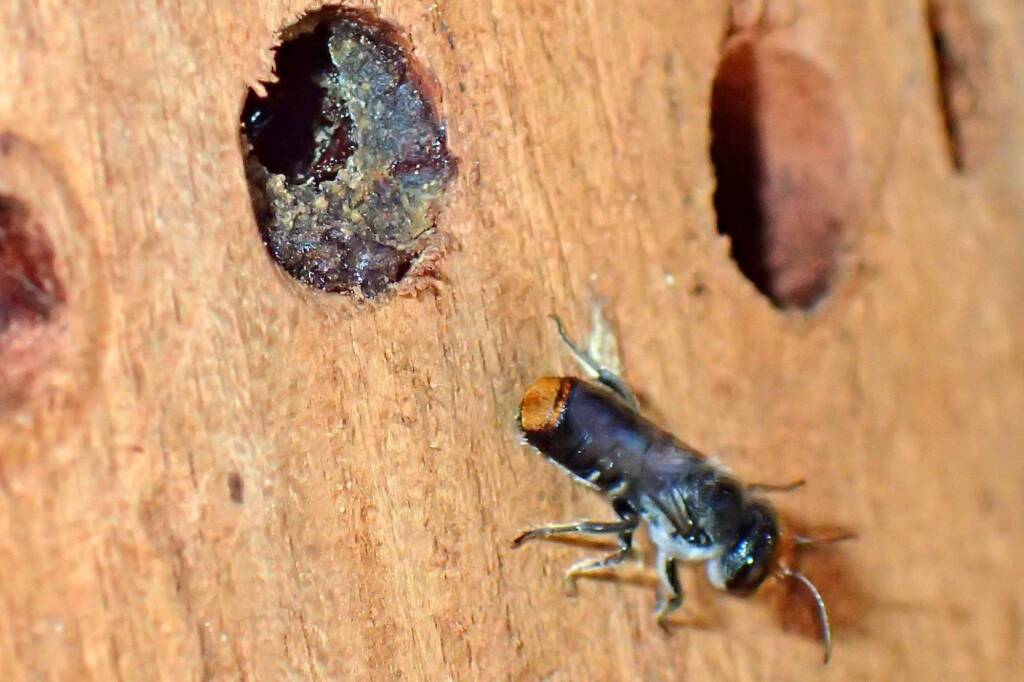Megachile erythropygaMegachile erythropyga nesting
Images and contribution Gary Taylor ◦
Like most resin bees, Megachile erythropyga nest in narrow holes such as often found in the dead bark and trucks of trees. They are also popular native bees that can be attracted to gardens by creating a “bee hotel”, the easiest being drilled blocks of timber.
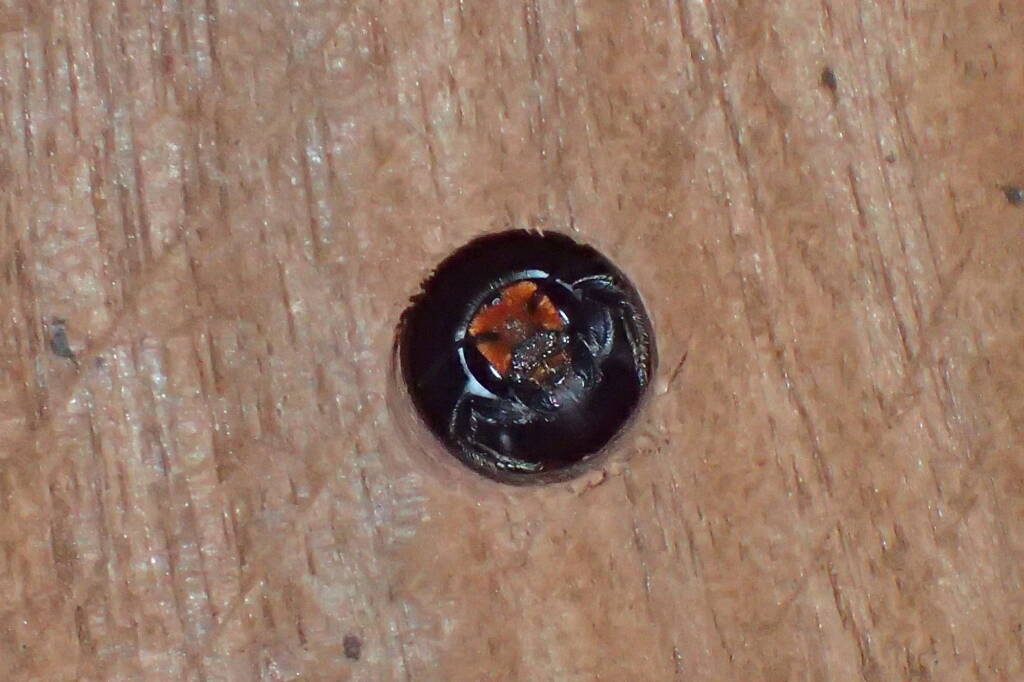
Once the Megachile erythropyga have prepared their nesting chambers, laid her eggs (each in a separate cell within the chamber and enough food (pollen/nectar) to feed the developing young, she then starts to cap the entry hole with resin.
The Megachile erythropyga is quite versatile in it’s capping materials, and the capping of the nest is a fascinating process to witness, as the she builds up the layers of the cap, often with assorted mixture of material.
Megachile erythropyga’s nest at different stages, she kept blocking the view in the making of it but I snuck a few pics in as she went off for more glistening jewels and stuff to make it with 🙂 The last pic is a bit of a revelation for me… A couple of times while watching her do her work she’d suddenly buzzed back from her nest a few inches looking around like I’d spooked her. Each time I stepped back a bit but it seemed to throw her off, she kept going in to other holes, furiously searching, then come back to the one she was working on like her little panic attack (that I thought I’d caused) was over… But no! She was just looking for wood drillings in the other holes to reinforce her structure 😃
Author Gary Taylor
From the series of photos above and following, you can see the remarkable workmanship of this little resin bee.
this show the progression of the resin based cap, the chewed up leaf bits looking like emeralds in the resin… then she adds diamonds and topaz… She then hides all the jewels behind big slabs of chewed up leaf and chunks of wood (drillings)…
Author Gary Taylor
and covers it all with leaf pulp which she works in with her mandibles (I reckon she’s also adding secretions from her mouth to help it bind…).
Once she has capped one nest, she then begins work on another nest.
After the egg hatches, the new young adult will then break through the resin cap to emerge out of the nest (referred scientifically as “eclose“).
M. erythropyga emerging. The last one I saw come out. This one seemed slightly smaller with yellow face fur and had less silver body hair, as well as a different looking rump so I’m guessing this one is a male…
Author Gary Taylor
The term “eclose” used in entomology, describes the emerging of an insect as an adult from the pupa or as a larva from the egg. This is based on the French éclore ‘to hatch’, based on Latin ex- ‘out’ + claudere ‘to close’.
This page is a work in progress…
- Scientific Classification
- Kingdom: Animalia
- Phylum: Arthropoda
- Subphylum: Hexapoda
- Class: Insecta
- Informal: Pterygotes
- Order: Hymenoptera
- Superfamily: Apoidea
- Informal: Apiformes
- Family: Megachilidae
- Subfamily: Megachilinae
- Tribe: Megachilini
- Genus: Megachile
- Species: Megachile erythropyga
Footnote & References
- Megachile erythropyga, Photographs © Gary Taylor
Megachile erythropygaMegachile erythropyga nesting
BeesBees Anatomy Bee Behaviour Blogging Bees… Bees – image index Amegilla Bee Apis mellifera Austroplebeia australis Austrothurgus Braunsapis sp Ceylalictus perditellus Colletidae Euryglossinae Exoneura Homalictus Hyleoides bivulnerata Lasioglossum Lasioglossum (Chilalictus) Lipotriches Megachile Meroglossa Stenotritidae Tetragonula Thyreus Xylocopa

